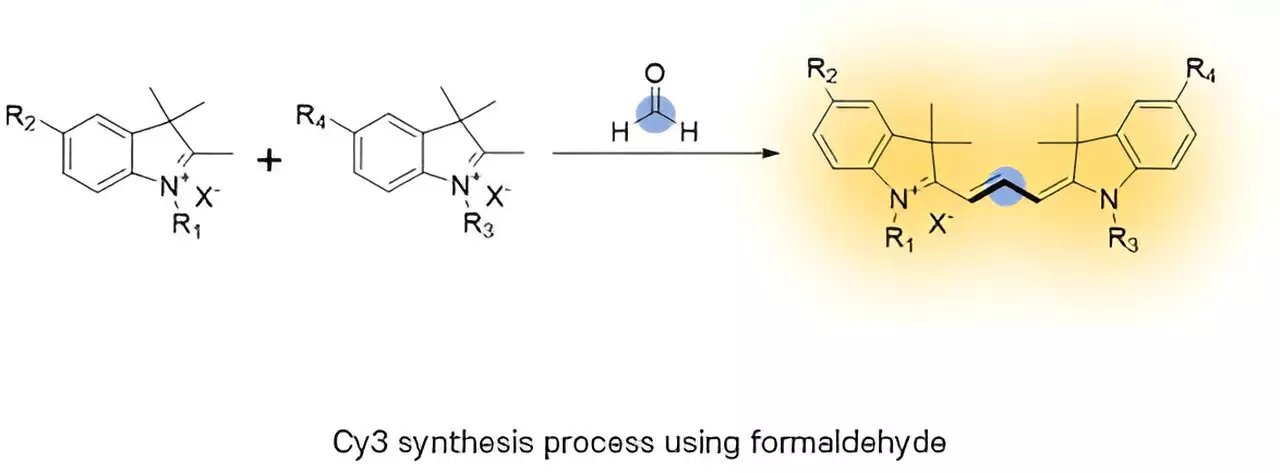Organic fluorophores, molecules capable of emitting light upon excitation, hold immense promise in various scientific fields, particularly in medical diagnostics and bioimaging. Their utility spans from tracking cancer cells to facilitating detailed genetic analyses. However, traditional methods for synthesizing these compounds, specifically trimethine cyanine (Cy3), have posed several challenges, hindering broader application and efficiency. This article explores a recent breakthrough by a research team that leverages the simple molecule formaldehyde to create organic fluorophores more effectively.
Challenges in Traditional Synthesis
In conventional methods, the synthesis of Cy3 involves a complex series of reactions that yield high molecular weight compounds. This not only complicates the process but also generates an array of byproducts, resulting in low atom efficiency. The intricate nature of these synthesis pathways leads to increased production costs and environmental concerns over waste. These factors underline a pressing need for more sustainable and efficient methods in the synthesis of organic fluorophores.
The research team, led by Professor Young-Tae Chang and Dr. Sun Hyeok Lee from POSTECH, has provided a transformative solution by integrating formaldehyde into the synthesis process. Formaldehyde, a simple molecule composed of one carbon atom, two hydrogen atoms, and one oxygen atom, plays a crucial role in constructing carbon-carbon bonds essential for the synthesis of Cy3. By substituting complex compounds with formaldehyde, the team has not only reduced the molecular complexity but also enhanced atom efficiency significantly.
The innovation simplifies a multi-step asymmetric synthesis into a streamlined one-pot reaction, effectively diminishing the stages and significantly boosting overall synthetic efficiency. This substantial reduction in complexity allows for more accessible and cost-effective production of Cy3 and potentially other organic fluorophores.
The implications of this breakthrough extend beyond synthetic chemistry and into biomedical research. The research team investigated the practicality of their approach in biological environments, recognizing that formaldehyde is a naturally occurring compound in metabolic processes. Their analysis within rat small intestine tissues revealed that inflammation significantly affected fluorescence intensity, with reduced levels observed due to decreased formaldehyde production during such states.
This correlation suggests that their method could facilitate better diagnostic techniques in vivo, enhancing the tracking of cellular events linked to disease processes. Enhanced fluorescence capabilities could lead to more sensitive detection of pathological changes, ultimately benefiting medical diagnostics and treatment monitoring.
This recent advancement in the synthesis of organic fluorophores using formaldehyde not only marks a significant turning point in the field of organic chemistry but also has broader implications for its applications in medicine and biological research. With the potential for improved diagnostic tools and more efficient production methods, this breakthrough exemplifies the importance of innovative approaches in addressing longstanding challenges in chemical synthesis. As the team continues to refine their techniques, the future of organic fluorophores appears brighter, paving the way for new discoveries and applications in various scientific domains.


Leave a Reply